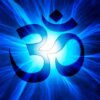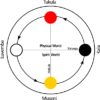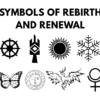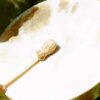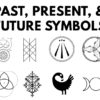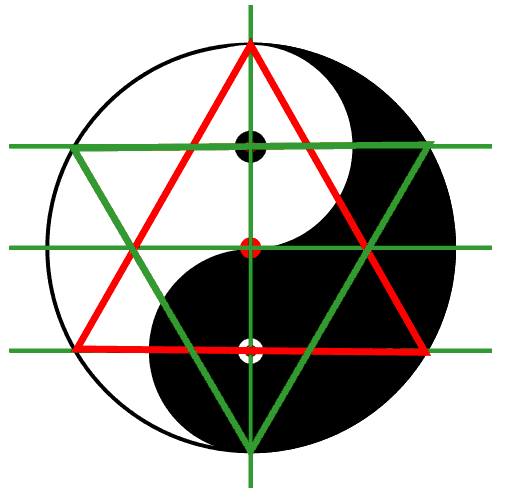
In a previous article, we discussed the various meanings associated with the Taoist Yin Yang symbol. Here’s a quick recap.
The Yin-Yang symbolizes oneness and unity, suggesting that everything originates from a single source. It also represents the idea of duality, that existence sustains itself through the perpetual interplay between two opposing yet interdependent energies – the divine masculine and the divine feminine.
These energies are in a constant cyclic motion which is why, each one of their influences increases or decreases with time. Sometimes the Yin is dominant and sometimes the Yang.
Thus the Yin Yang is the ultimate symbol of creation. It also represents oneness, duality, balance, interconnection, interdependence, and the cyclic nature of existence.
Interestingly, Yin Yang is not the only symbol that represents these concepts. There are many ancient symbols found across various cultures, civilizations, and spiritual beliefs that are very similar to the Yin Yang in their design and the meaning they convey.
In this article, let’s look at 14 symbols that are similar in concept and idea to the Yin Yang symbol. But before we proceed, let’s understand the design of the Yin Yang symbol in further detail.
What is the Yin Yang Symbol?
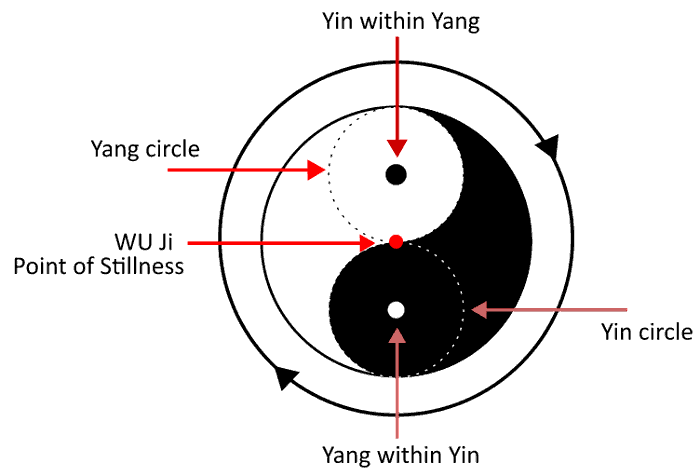
The Yin Yang symbol consists of a circle containing two swirling halves — one black, and one white — each containing a dot of the opposite color. The black (Yin) represents passive, cold, and feminine energies, while the white (Yang) symbolizes active, warm, and masculine forces. The dots signify the presence of the opposite energy within each – so the masculine contains within it the seed of the feminine, and vice versa. Thus, these energies are deeply interconnected and interdependent.
The swirls indicate that these energies are in a constant state of motion where the influence of these energies keeps changing. Sometimes the Yin is dominant and sometimes the Yang and they constantly balance each other out.
Now that we understand the design, let’s take a look at 17 ancient symbols that are similar to the Yin Yang.
17 Ancient Symbols like the Yin Yang
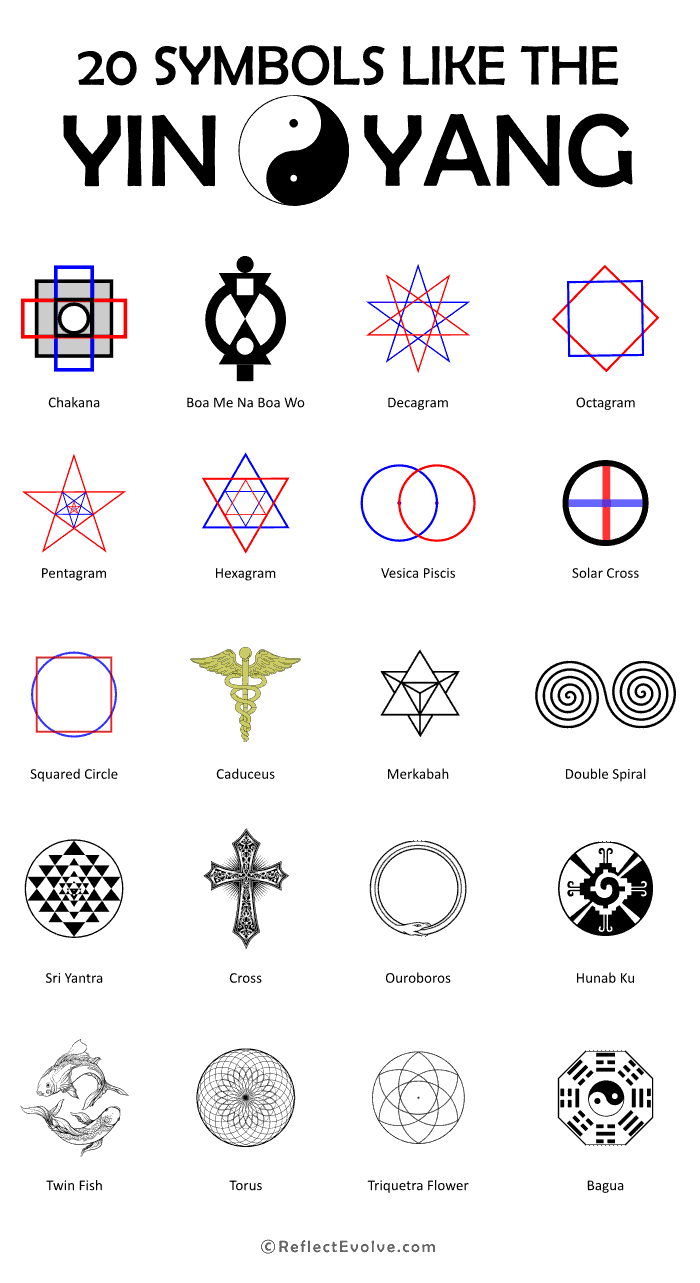
1. 10-Pointed Star (Decagram)
The 10-pointed star is an ancient star symbol that consists of two overlapping pentagrams, one facing upward and the other facing downward as shown in the image below:
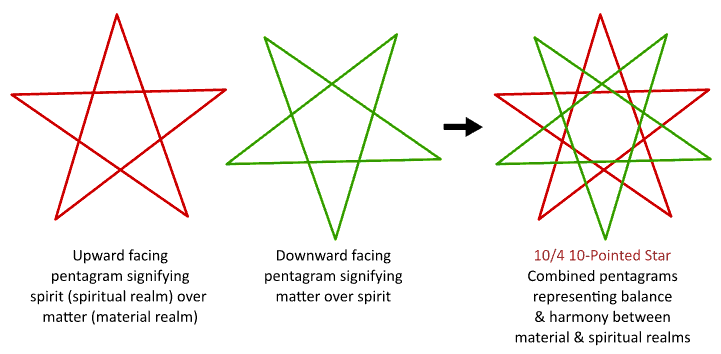
The upward facing pentagram symbolizes feminine energy and the dominance of spirit over matter. The downward one symbolizes masculine energy and the dominance of matter over spirit. Their interaction resulting in the 10-pointed star symbolizes perfect balance, harmony, interconnection, and most importantly, creation, just like the Yin Yang.
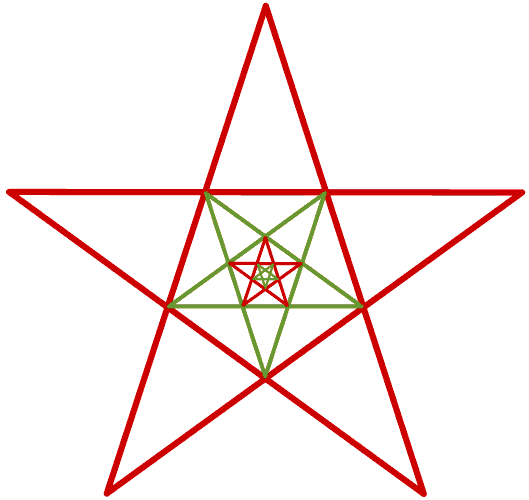
Also, as shown in the image above, within each pentagram we can draw a smaller pentagram that is inverted to the main pentagram. This symbolizes the presence of the masculine within the feminine and feminine with the masculine similar to the Yin Yang.
Thus the 10-pointed star is the perfect symbol that is similar to the Yin Yang.
2. 6-Pointed Star (Hexagram)
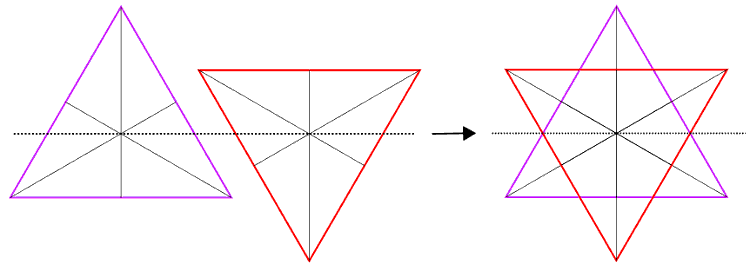
The six-pointed star, known as Shatkona in Hinduism and the Star of David in Judaism, symbolizes unity in duality, much like the Yin Yang. It features two interlocking equilateral triangles, with one pointing upwards representing masculine energy and the other facing downwards representing feminine energy. The common center that these triangles share represents the source of all existence.
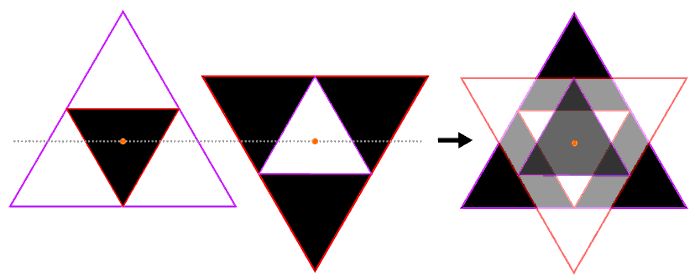
Interestingly, just like the 10-pointed star, if we were to connect the midpoints of each side of a triangle, we get a smaller triangle that faces the other way to the main triangle. This triangle also has the same center as the main triangle. This symbolizes the presence of the masculine within the feminine and vice versa just like the Yin Yang. This is as shown in the image above.
Also, as you can see from the image below, the Six-Pointed star is present right within the Yin Yang.
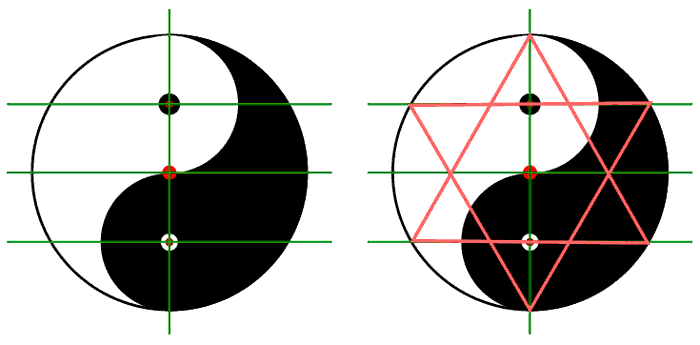
Thus the six-pointed star is very similar in its design and concept of the Yin Yang.
3. 8-pointed star (Octagram)
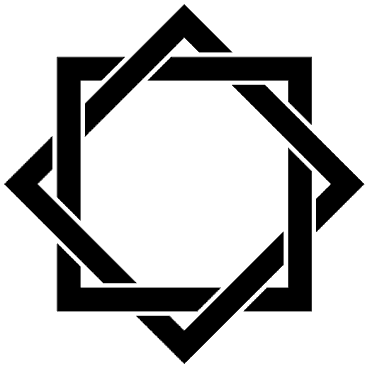
The 8/4 Eight-pointed star consists of two overlapping squares. One a regular square and the other tilted 45 degrees to form a diamond or a rhombus shape. The regular square symbolizes the material realm and masculine energy, whereas the tilted square represents the spiritual realm and feminine energy. The squares share a common center that represents the source from which everything emanates.
Connecting the centers of the sides of a square would create another square that looks like a diamond and is titled by 45 degrees. This represents the presence of one polarity within the other just like the Yin-Yang.
4. Boa Me Na Me Boa Wo – Adinkra Symbol
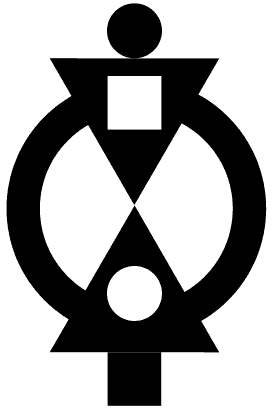
The Adinkara symbol called the ‘Boa Me Na Me Boa Wo’, which translates to ‘Help me and let me help you’ is very similar to the Yin Yang. It is a symbol of unity and interdependence.
The symbol comprises two triangles joined at the apex to create a shape reminiscent of an hourglass. This part of the symbol is sometimes interpreted to represent two separate individuals or entities coming together in a partnership where they share common ground or support each other.
The upper triangle contains within a white square and a black circle at its base. Whereas the lower triangle contains a white circle and a square at its base. The upper triangle with the white square represents masculine energy and the black circle at the top represents the presence of the feminine within the masculine. Similarly, the lower triangle with the white circle represents feminine energy and the square at its base represents the presence of the masculine within the feminine.
Both these energies come together to create perfect balance which is the basis of all creation. Thus this is the perfect replica of the Yin Yang symbol.
5. Vesica Piscis
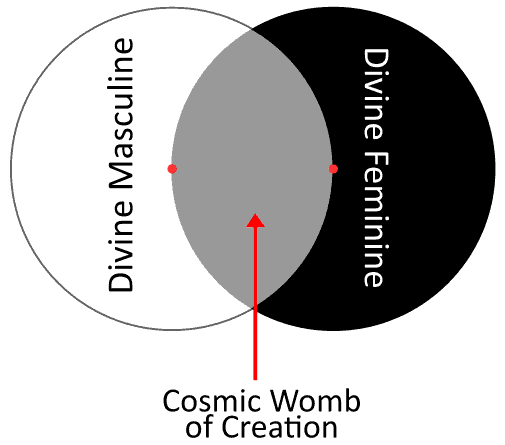
The Vesica Piscis is an ancient symbol that is composed of two circles that overlap in such a way that the perimeter of one circle runs through the center of the other. One circle represents the spiritual realm (or the feminine principle) and the other represents the material (or masculine principle). The lens shape formed by their intersection represents the cosmic womb or the space from where creation emanates. Thus the Vesica Piscis represents the concept of oneness and duality much like the Yin Yang.
6. Caduceus

The Caduceus is an ancient symbol that features two snakes winding around a staff. The entwined snakes represent the concept of masculine and feminine energies and the sphere at the top of the staff represents creation. The caduceus represents the harmony between dualities, reminiscent of the balanced opposition in Yin Yang.
7. Solar Cross
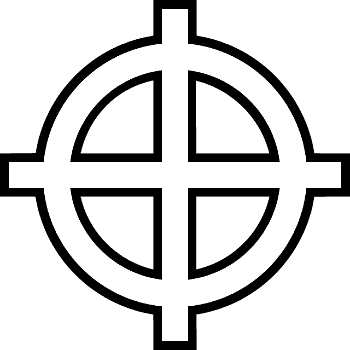
The Solar Cross consists of two equal armed lines intersecting. The vertical line symbolizes the material realm and the divine masculine, whereas the horizontal line symbolizes the spiritual realm and the divine feminine. Their point of intersection is the source of all creation. The outer circle represents the eternal consciousness and the eternal nature of life. This concept is very similar to the Yin Yang.
8. Squared Circle
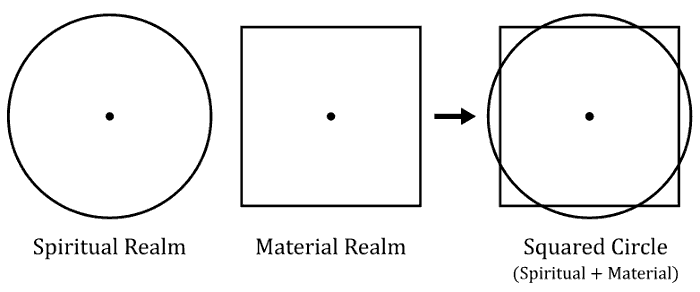
The Squared Circle is an ancient alchemical symbol that is composed of an overlapping square (earth or material realm) and a circle (heaven or spirit realm). The square and the circle have the same area and the same center. The symbol reflects the grounding of spirit in matter which is the basis of all creation, akin to the balancing act of Yin Yang.
9. Hunab Ku
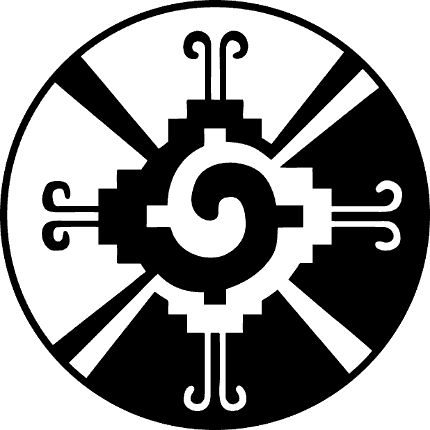
The Hunab Ku (translated as ‘One God’) is an ancient Mayan symbol that comprises a circle divided into two halves (one white and the other black). The circle also contains two interlocking spirals at the center. These spirals represent duality and the unity of opposing forces, converging at a central point, which signifies the Source or the One Creator in Mayan mythology. Similar to the Yin Yang, the Hunab Ku symbolizes duality arising out of oneness and the interconnectedness of all things.
10. Zoroastrian Concept of Asha & Druj
As per Zoroastrian cosmology, there is the concept of Asha (Cosmic or divine order) and Druj (chaos or the antithesis of Asha) which is very similar to the concept of Yin Yang. Asha and Druj are said to be in a never ending battle which is the essential nature of existence.
The continuous battle between Asha and Druj is not just cosmic but also moral and existential, playing out in the human heart and mind, and the choices made by individuals and societies. This struggle is thought to continue until the final restoration of order in the world, known as Frashokereti, where good ultimately prevails.
11. Shiv-Shakti
The Shiv-Shakti is a powerful Hindu symbol that depicts Lord Shiva and Goddess Parvati in an interlocked form as shown in the image below.
Shiva represents the divine masculine and Parvati represents the divine feminine embodying the creative interplay between feminine and masculine energies like the Yin Yang. Their interlocked form is a symbol of creation, interdependence, duality, as well as oneness.
The Shiva-Linga symbol is another symbolic representation of Shiv-Shakti along with the 6-Pointed Star that we saw earlier.
12. Double Spiral
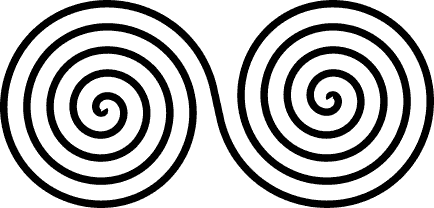
The double spiral depicts two connected spirals where one spiral appears to be going inside out and the other outside in. If you start from the center of one spiral, the spiral appears to go outside until you end up at the center of the other spiral.
The spiral going inside-out symbolizes masculine energy and the spiral going outside-in symbolizes feminine energy. Thus the double spiral depicts two opposing energies that are balanced and interconnected similar to the yin yang.
13. Chakana
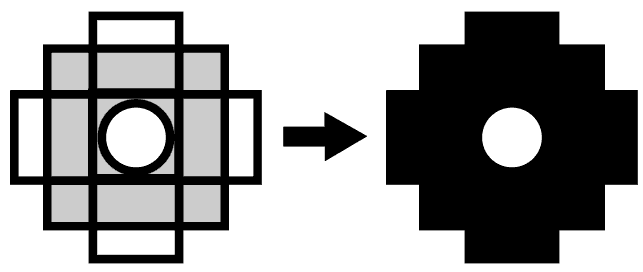
The Chakana is an ancient Inca symbol that is made of two equal-armed crosses and a superimposed square. It also has a circle at the center. The vertical and horizontal arms of the cross symbolize masculine and feminine energies. Their intersection creates a square and circle at the center which symbolizes the source of all creation.
The superimposed square symbolizes the material world whereas the circle symbolizes the spiritual realm. Thus the Chakana is very similar to the Yin Yang in what it represents.
14. Twin Fish Symbol
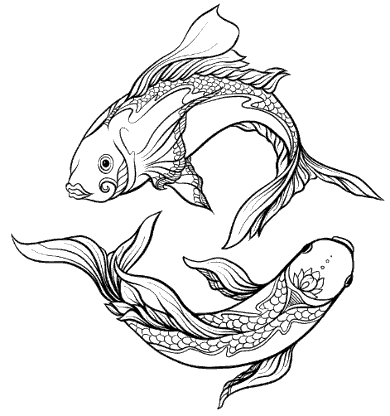
The Double Fish is a Taoist symbol that depicts two fishes swimming in a circle. The fishes symbolize the masculine and feminine principles and their perpetual circular motion symbolizes the rise and fall of these energies and the cyclic nature of existence similar to the Yin Yang.
15. Ouroboros
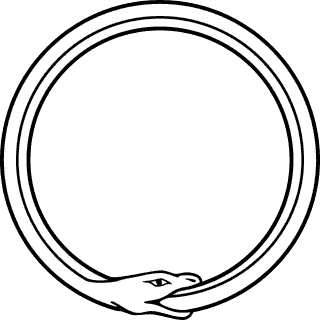
Ouroboros is an ancient symbol that depicts a snake eating its own tail. This symbol represents the cyclic nature of the universe and the never-ending cycle of creation, sustenance, and destruction. Similar to the Yin Yang, it also represents the constant interaction between two opposing forces, represented by the snake’s head and its tail that is responsible for the existence of reality.
16. Triquetra
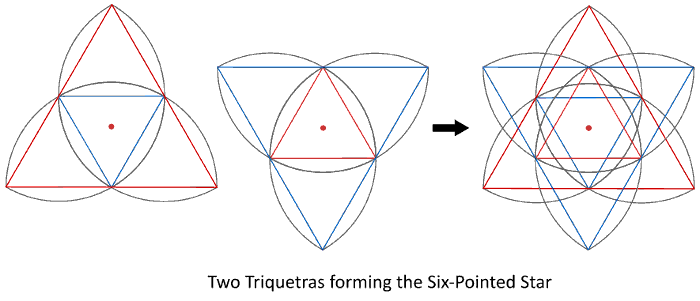
The triquetra star is a symbol formed by overlapping an upward and downward facing triquetra. It represents everything that the 6-pointed star represents and hence is also similar to the Yin Yang.
17. Torus
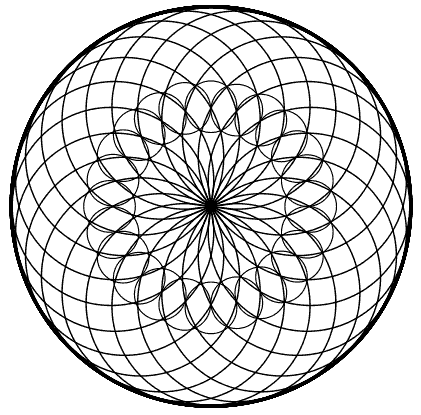
The Torus is a doughnut-shaped form that cycles energy inward and outward, resonating with the continuous, cyclical flow of Yin and Yang energies.

In-fact, you can create the torus right out of the Yin Yang as shown in the image above.
Conclusion
The Yin Yang is a powerful symbol that encapsulates the fundamental principles of the universe’s origins and its functioning. It represents the emergence of all things from a single source and concept of duality that is the basis of all existence. A testimony to the truth it holds is the presence of numerous symbols across different cultures and belief systems as we saw in this article, that echo the same core message.


